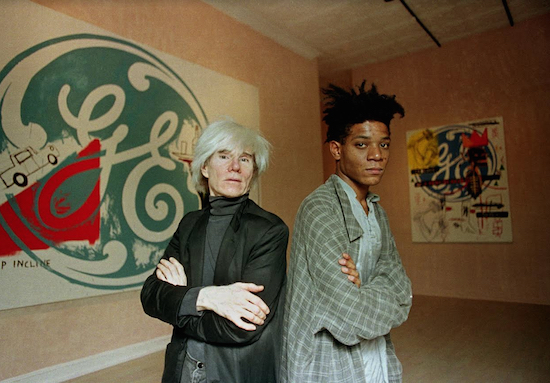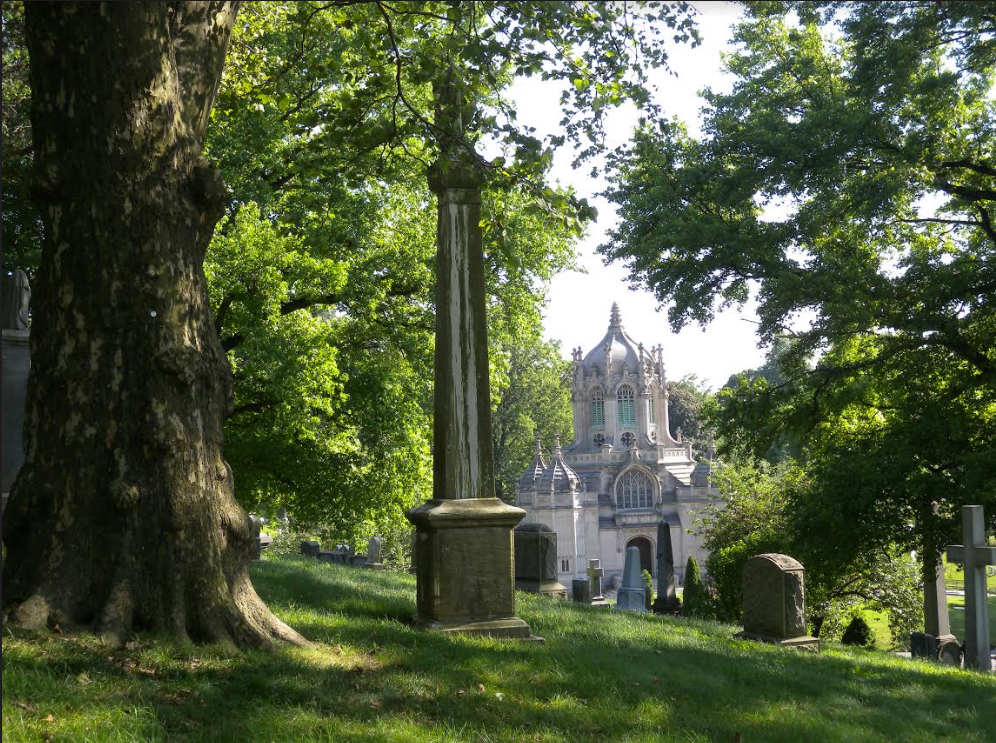Do you know the way to Basquiat’s grave?
Green-Wood Cemetery is final resting place for legendary artist

Jean-Michel Basquiat (at right), shown in this 1985 photo with fellow artist Andy Warhol, is buried in Green-Wood Cemetery. AP File Photo/Richard Drew
This would be a good time to make a pilgrimage to Basquiat’s grave in Green-Wood Cemetery.
The legendary artist, who died of an accidental drug overdose in 1988, is on New Yorkers’ minds these days.
Work he painted in collaboration with Andy Warhol is on display in a blockbuster retrospective of the latter’s art at the Whitney Museum in the Meatpacking District.
